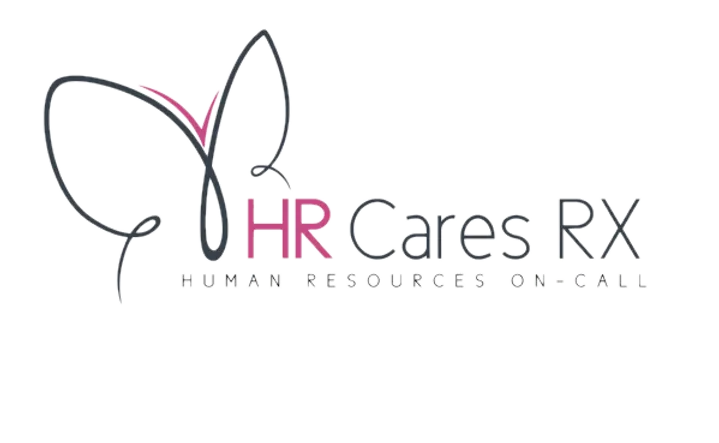Get in touch
843-695-7484
sharon@hrcaresrx.com
HR Cares Rx: Empowering Leaders to Thrive in Every Stage of Their Career"
Sharon McGhee • January 24, 2025
The Transformative Power of 360 Feedback in Leadership Development
In today’s dynamic corporate landscape, effective leadership is the cornerstone of organizational success. But how do leaders evolve to meet the challenges of tomorrow? One powerful tool for fostering growth is 360 Feedback. This approach provides a multi-faceted evaluation of a leader’s performance, enabling them to develop a well-rounded perspective of their strengths and areas for improvement.
What is 360 Feedback?
360 Feedback gathers insights from various sources—managers, peers, direct reports, and even clients. Unlike traditional top-down evaluations, this method offers a comprehensive view of a leader's performance, focusing on key competencies such as communication, decision-making, and interpersonal skills.
Why 360 Feedback Matters for Leadership Development
1. Self-Awareness
Leaders often operate in echo chambers, receiving limited feedback from their immediate superiors. 360 Feedback shatters these silos, providing leaders with an honest assessment from multiple perspectives. This fosters greater self-awareness—a foundational trait for effective leadership.
2. Personalized Development Plans
With a clear understanding of their strengths and weaknesses, leaders can tailor their development plans to address specific gaps. Whether it’s enhancing emotional intelligence or refining conflict-resolution skills, 360 Feedback pinpoints where to focus their efforts.
3. Enhanced Communication
Feedback from diverse sources highlights how leaders communicate across organizational levels. This insight enables them to adapt their communication styles to different audiences, fostering stronger relationships and trust within teams.
4. Building Accountability
When feedback comes from colleagues and team members, leaders are motivated to act on it. This collaborative approach to development nurtures a culture of accountability and continuous improvement.
5. Driving Organizational Growth
Effective leaders drive organizational success. By using 360 Feedback, organizations invest in their leadership’s growth, which trickles down to improved team performance, innovation, and employee engagement.
Best Practices for Implementing 360 Feedback
1. Ensure Anonymity: Encourage honest feedback by protecting the identity of respondents.
2. Focus on Development, Not Punishment: Use feedback to support growth rather than penalize.
3. Offer Professional Coaching: Provide leaders with access to coaching resources to help them interpret and act on feedback.
4. Regular Follow-Ups: Make 360 Feedback an ongoing process to track progress and maintain accountability.
A Catalyst for Transformational Change
360 Feedback is not just a performance review tool; it’s a catalyst for transformational leadership development. By embracing diverse perspectives, leaders can cultivate the skills and mindset necessary to navigate complexity and inspire their teams. For organizations, the result is a pipeline of resilient, adaptive leaders ready to propel the company forward.
Empower your leaders today with 360 Feedback—and unlock their potential to lead with clarity, confidence, and purpose.
How is your organization using 360 Feedback for leadership development? Share your thoughts and experiences below! HR Cares Rx can help you implement a 360 Feedback program in your organization.

By Sharon McGhee
•
January 24, 2025
As a business owner, you wear many hats—strategist, innovator, and leader. However, one of your most important roles is ensuring compliance with employment laws and regulations. Among these, the Form I-9 is a critical piece of the puzzle that many businesses overlook or underestimate. But failing to complete and maintain I-9 forms properly can lead to hefty penalties, legal complications, and damage to your reputation. At HR Cares Rx, we understand the importance of compliance, and we’re here to help you navigate the complexities of I-9 requirements. Here’s why now is the perfect time to audit your I-9 forms and how we can support you through the process. What Is the I-9 Form, and Why Is It Important? The Form I-9, or Employment Eligibility Verification, is a mandatory document that verifies the identity and employment authorization of individuals hired to work in the U.S. It’s required for every employee, regardless of citizenship status, and must be completed within the first three days of employment. An incomplete, inaccurate, or missing I-9 form puts your business at risk of fines from U.S. Immigration and Customs Enforcement (ICE). Beyond the financial repercussions, non-compliance can raise questions about your commitment to following labor laws and create unnecessary headaches during audits or investigations. The Risks of Non-Compliance Not having your I-9 forms completed correctly or on time can have serious consequences: • Fines: ICE can impose penalties ranging from hundreds to thousands of dollars per violation. • Audits and Investigations: A poorly maintained I-9 file can trigger a full-scale audit of your employment practices. • Reputational Damage: Compliance issues can erode trust with your employees and clients. Why Now Is the Perfect Time for an I-9 Audit With labor laws and enforcement measures evolving, there’s no better time to review your I-9 practices than right now. An audit ensures: • Accuracy and Completeness: Identify and correct any errors or omissions in your current forms. • Compliance with New Regulations: Stay up to date with recent changes, such as the transition to the new Form I-9 version. • Proactive Risk Management: Catch potential issues before they become costly problems. How HR Cares Rx Can Help At HR Cares Rx, we specialize in providing businesses with tailored HR solutions, including I-9 compliance audits. Our team of experts will: • Conduct a thorough review of your existing I-9 forms. • Identify errors, missing documents, or outdated information. • Provide recommendations and support to bring your files into compliance. • Train your team on proper I-9 completion and recordkeeping practices. We take the stress out of compliance so you can focus on growing your business. Protect Your Business Today I-9 compliance isn’t just a box to check—it’s an essential part of safeguarding your business. Don’t wait for an audit or investigation to discover gaps in your compliance efforts. Let HR Cares Rx help you take a proactive approach by auditing your I-9 forms and ensuring your processes are airtight. Ready to get started? Contact HR Cares Rx today to schedule your I-9 audit and protect your business with confidence. At HR Cares Rx, we believe in empowering businesses through thoughtful and effective HR solutions. Visit www.hrcaresrx.com to learn more about our services and how we can support your compliance needs. The body content of your post goes here. To edit this text, click on it and delete this default text and start typing your own or paste your own from a different source.

By Sharon McGhee
•
December 21, 2024
Every thriving organization relies on effective communication and a cohesive team. The key to achieving this lies in a well-structured employee handbook. At HR Cares Rx, we understand how an employee handbook is critical for fostering transparency, consistency, and compliance in the workplace. Why an Employee Handbook Matters 1. Clarity and Structure An employee handbook provides a centralized resource for company policies, work expectations, and benefits. Employees can refer to it for guidance on topics such as remote work, workplace conduct, and time-off policies, eliminating confusion. 2. Streamlined Onboarding For new hires, a handbook acts as a guide to company values and operational procedures. This resource reduces onboarding time while empowering employees to hit the ground running with confidence. 3. Consistency Across the Organization By clearly outlining policies and procedures, handbooks eliminate inconsistencies in how employees are treated. This fairness promotes trust and unity among the workforce. 4. Legal Compliance An employee handbook ensures that your company adheres to labor laws and workplace regulations. From anti-discrimination policies to safety protocols, having everything documented safeguards your business from legal disputes. 5. Risk Reduction Conflicts often arise from misunderstandings or misinterpretation of policies. A detailed handbook minimizes these risks by setting clear expectations and consequences. 6. Employee Empowerment When employees have access to a reliable resource, they feel confident navigating their roles. A handbook empowers them to address minor issues independently, reducing unnecessary reliance on management. Optimize Your Workplace with HR Cares Rx At HR Cares Rx, we specialize in creating employee handbooks tailored to your unique needs. Our team ensures your handbook reflects your company culture while meeting the latest compliance standards. With our expertise, your handbook will serve as a cornerstone for organizational success. Key Benefits of Partnering with HR Cares Rx: • Customization for your industry • Legal updates for policy compliance • Employee engagement through clear communication Get Started Today! A well-crafted employee handbook is more than a document—it’s a tool for building trust, boosting productivity, and protecting your business. Contact HR Cares Rx today and take the first step towards creating a thriving workplace culture. Don’t forget to share this blog! It’s an excellent resource for HR professionals, business owners, and team leaders looking to strengthen their organizational foundation.

By Sharon McGhee
•
December 21, 2024
Managing Burnout and Stress: Strategies for Women in Leadership Introduction Leadership can be exhilarating, rewarding, and impactful—but it can also be exhausting. Women in leadership roles often face unique challenges that contribute to burnout and stress, such as juggling high expectations, managing diverse teams, and sometimes shouldering the weight of breaking through systemic barriers. At HR Cares Rx, we recognize the importance of addressing these challenges to foster both personal well-being and professional success. In this blog, we’ll explore actionable strategies for managing burnout and stress tailored for women in leadership. Understanding Burnout and Stress in Leadership Leadership burnout stems from chronic workplace stress that isn’t adequately managed. For women leaders, additional stressors may include: • Pressure to excel: Balancing perfectionism with high expectations from peers and stakeholders. • Invisible labor: Emotional labor and extra responsibilities that often go unnoticed or unacknowledged. • Limited networks: Fewer mentors and peers who can offer support in navigating leadership dynamics. Recognizing early signs of burnout, such as emotional exhaustion, reduced performance, and detachment, is the first step toward managing it effectively. Strategies to Manage Burnout and Stress 1. Prioritize Self-Care Leadership roles often involve giving more than receiving. To sustain your energy: • Schedule non-negotiable time for activities you enjoy, such as exercise, reading, or meditation. • Ensure adequate sleep and proper nutrition to fuel your body and mind. • Engage in mindfulness practices to help reduce daily stress. 2. Set Boundaries Boundaries are crucial for maintaining a healthy work-life balance: • Learn to say no to tasks that don’t align with your priorities. • Delegate responsibilities to empower your team while lightening your load. • Establish work hours and minimize after-hours communication to protect personal time. 3. Leverage Support Systems Isolation can amplify stress. Build a robust network of support: • Seek mentors or coaches who understand your challenges. • Connect with peer leaders through networking groups or professional associations. • Discuss challenges with trusted friends or colleagues to gain fresh perspectives. 4. Focus on Emotional Intelligence Strong emotional intelligence can help navigate the complex dynamics of leadership: • Practice empathy to better understand your team’s needs while managing your own emotions. • Identify triggers that lead to stress and develop constructive responses. • Celebrate achievements—both yours and your team’s—to cultivate positivity. 5. Implement Stress Management Techniques Incorporate practical stress-relief tactics into your routine: • Use breathing exercises or short meditations during high-pressure moments. • Break your day into manageable chunks with regular breaks to recharge. • Reflect on accomplishments weekly to remind yourself of the progress you’re making. Why It Matters Burnout doesn’t just affect individual leaders—it impacts their teams, organizations, and broader communities. When women in leadership prioritize their well-being, they set a powerful example, creating a culture that values mental health and sustainable success. At HR Cares Rx, we’re dedicated to equipping women leaders with the tools and resources they need to thrive, not just survive. Let’s build a future where strong leadership coexists with personal well-being. Conclusion Managing burnout and stress is not a one-size-fits-all journey, but by embracing intentional strategies, women in leadership can navigate their challenges with resilience and strength. Remember: prioritizing your well-being isn’t a weakness—it’s a vital investment in your leadership potential. Call To Action: If you’re looking for more resources to support women in leadership, explore our wellness programs and coaching services tailored to empower leaders at every level.
© 2025
All Rights Reserved | HR CARES RX

